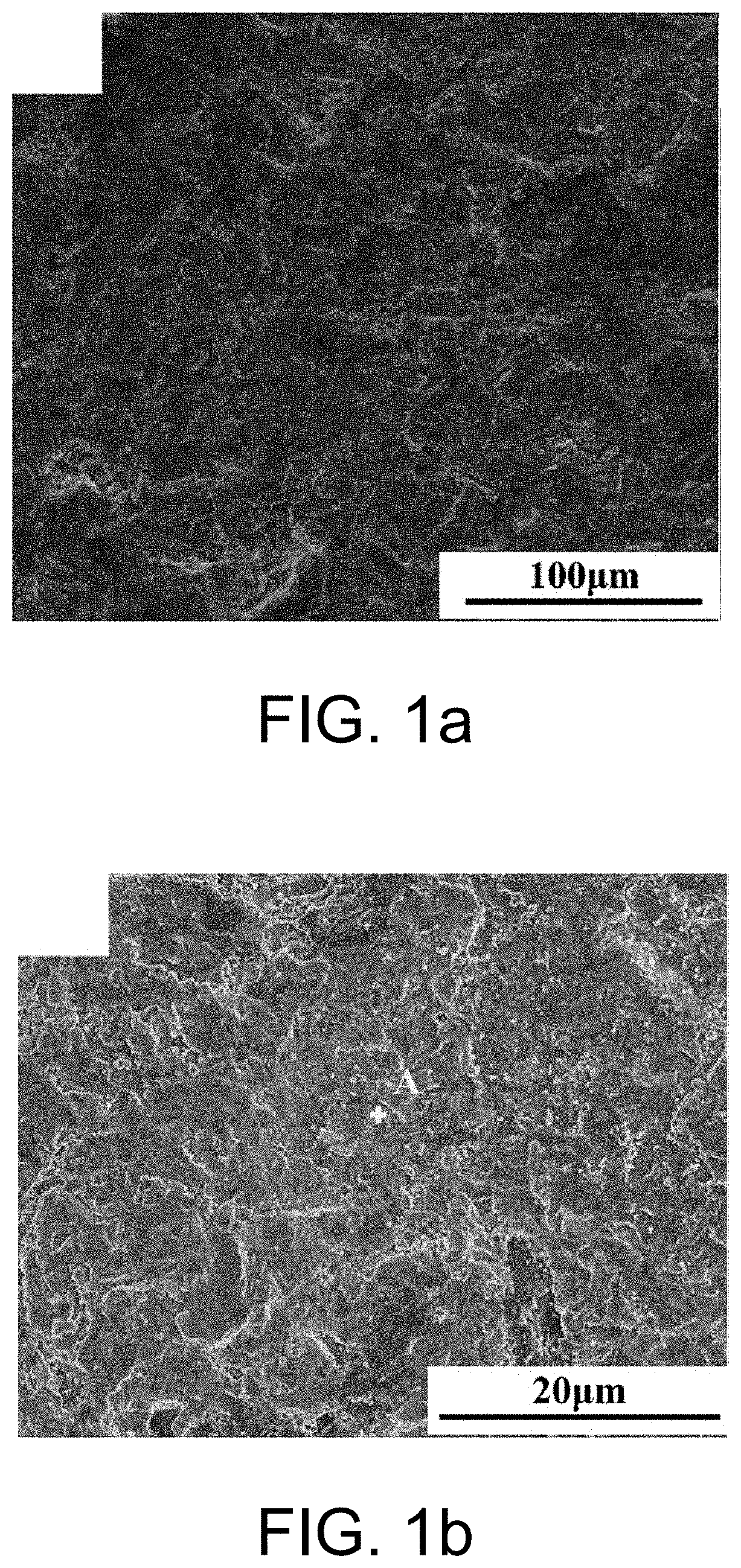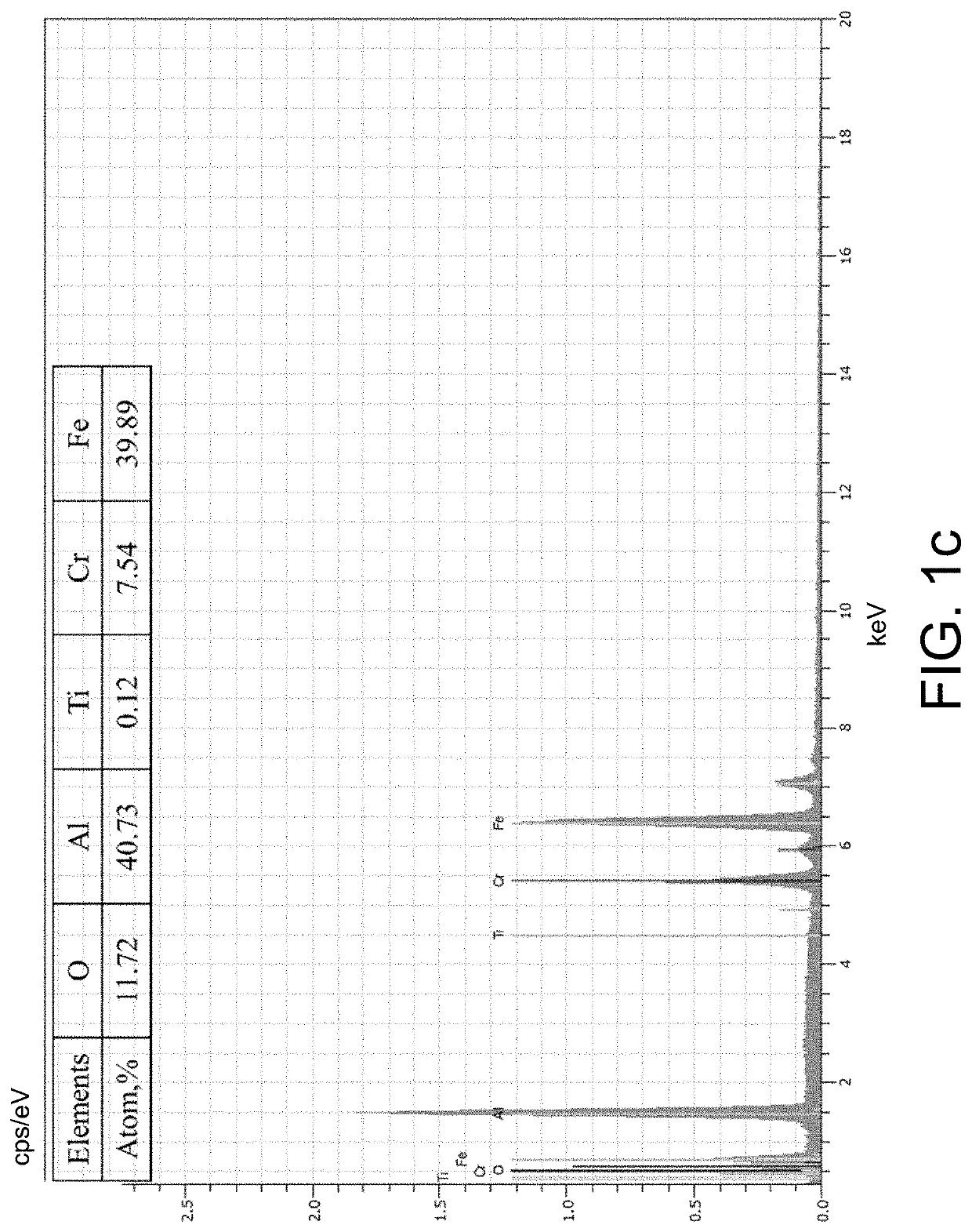Molten al-si alloy corrosion resistant composite coating and preparation method and application thereof
- Summary
- Abstract
- Description
- Claims
- Application Information
AI Technical Summary
Benefits of technology
Problems solved by technology
Method used
Image
Examples
embodiment 1
[0050]According to a molten Al—Si alloy corrosion resistant composite coating provided by the present invention, the composite coating comprises an aluminized layer, an Al2O3 thin film layer and a TiO2 thin film layer from a substrate surface to outside in sequence. The Al2O3 thin film layer with thickness of 5 nm and the TiO2 thin film layer with thickness of 20 nm are introduced by means of an atom layer vapor deposition; the aluminized layer comprises an Fe(Al) phase diffusion layer, an Fe—Al compound layer and an Al2O3 layer from the substrate surface to outside in sequence. The Fe(Al) phase diffusion layer, the Fe—Al compound layer and the Al2O3 layer have micro-sized thicknesses.
[0051]A preparation method for the molten Al—Si alloy corrosion resistant composite coating of this embodiment, comprising the following steps:
[0052](1) Surface mechanical polishing: polishing a hot-rolled austenitic stainless steel plate test piece to remove visible scratches using an abrasive paper w...
embodiment 2
[0058]According to a molten Al—Si alloy corrosion resistant composite coating provided by the present invention, the composite coating comprises an aluminized layer, an Al2O3 thin film layer and a TiO2 thin film layer from a substrate surface to outside in sequence. The Al2O3 and the TiO2 thin film layers with thicknesses of 30 nm and 50 nm are introduced by means of an atom layer vapor deposition; the aluminized layer comprises an Fe(Al) phase diffusion layer, an Fe—Al compound layer and an Al2O3 layer from the substrate surface to outside in sequence. The Fe(Al) phase diffusion layer, the Fe—Al compound layer and the Al2O3 layer have micro-sized thicknesses.
[0059]A preparation method for the molten Al—Si alloy corrosion resistant composite coating of this embodiment, comprising the following steps:
[0060](1) Surface mechanical polishing: polishing a hot-rolled austenitic stainless steel plate test piece to remove visible scratches using an abrasive paper with a granularity varying ...
embodiment 3
[0066]According to a molten Al—Si alloy corrosion resistant composite coating provided by the present invention, the composite coating comprises an aluminized layer, an Al2O3 thin film layer and a TiO2 thin film layer from a substrate surface to outside in sequence. The Al2O3 thin film layer with thickness of 10 nm and the TiO2 thin film layer with thickness of 10 nm are introduced by means of an atom layer vapor deposition; The aluminized layer comprises an Fe(Al) phase diffusion layer, an Fe—Al compound layer and an Al2O3 layer from the substrate surface to outside in sequence. The Fe(Al) phase diffusion layer, the Fe—Al compound layer and the Al2O3 layer have micro-sized thicknesses.
[0067]A preparation method for the molten Al—Si alloy corrosion resistant composite coating of this embodiment, comprising the following steps:
[0068](1) Surface mechanical polishing: polishing a hot-rolled austenitic stainless steel plate test piece to remove visible scratches using an abrasive paper ...
PUM
| Property | Measurement | Unit |
|---|---|---|
| Temperature | aaaaa | aaaaa |
| Temperature | aaaaa | aaaaa |
| Temperature | aaaaa | aaaaa |
Abstract
Description
Claims
Application Information
 Login to View More
Login to View More - R&D
- Intellectual Property
- Life Sciences
- Materials
- Tech Scout
- Unparalleled Data Quality
- Higher Quality Content
- 60% Fewer Hallucinations
Browse by: Latest US Patents, China's latest patents, Technical Efficacy Thesaurus, Application Domain, Technology Topic, Popular Technical Reports.
© 2025 PatSnap. All rights reserved.Legal|Privacy policy|Modern Slavery Act Transparency Statement|Sitemap|About US| Contact US: help@patsnap.com



